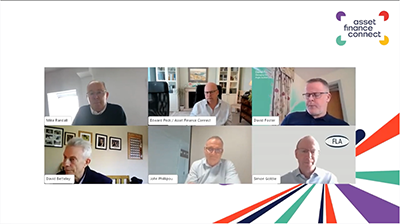
Following the recent Asset Finance Connect (AFC) webcast on the Finance & Leasing Association’s (FLA) broker accreditation scheme, AFC asked an investor in asset finance lenders and brokers his view on the FLA proposals for the scheme.
Brokers are unsurprisingly reluctant to disagree publicly with their lender-partners. This investor prepared the following for us but asked not to be named.
- His analysis again reflects the consensus we found elsewhere that broker-lender collaboration and cooperation is imperative.
- He also believes in establishing a common standard for audit.
- He argues against subcontracting the process which he sees as a vital element in the lender and broker building a common understanding.
- He suggests an alternative approach.
Importance of KYB - Know your Broker
With a long history in building and leading asset finance companies and engaging with the asset finance broker community through a combination of acquisition and investment, I understand the need for asset finance lenders to undertake rigorous and regular audits of brokers.
These will be focussed on operational competence, sources of business, origination techniques, deal structuring and placement, and importantly, managing and leading the business in accordance with market regulations.
The objectives of collaboration and co-operation between funders and the broker community is essential. The audit process carried out individually between lenders and brokers is an important part of this collaboration and should not be subcontracted.
From a funders’ perspective, ‘Know your Broker’ (KYB) (intermediary/introducer/agent) should be a top priority. Brokers may well provide them with their main ‘route to market’, delivering most or all of their asset finance originations and renewals.
At present the audit and review system and approach (annual, intense, ‘light touch’) is bespoke. It varies between lenders.
Big brokers and small brokers
For the larger more sophisticated brokers, the regularity and number of audits is not really an issue. It is a valuable interaction. Brokers and lenders both learn about each other during the process.
For the smaller brokers and agents there is more of a challenge. For the lender who may only receive a limited number of proposals per annum there may be concern about the ‘cost to serve’ the broker. But KYB is as important here as it is with larger brokers.
The lender has to decide whether the cost is worthwhile. The opportunity cost of not dealing with a broker however should not be missed.
Without a broker, the asset lender would need to make material investment in origination resource (technologies, marketing, and events). The relatively small investment in the review often represents excellent value for money even when the broker provides low volumes of business.
Large or small the lender-lead review provides the funder with a ‘line of sight’ on the operations of the broker. It provides a window on the broker’s approach to compliance and regulation. It is a great opportunity for relationship management and learning. It should not be subcontracted
An alternative process which delivers efficiency
I can certainly see the benefits of the development of a ‘baseline’ audit that is agreed by all funders within the FLA and released to brokers as the start position for an operational review.
In my view, this needs to be drafted and released so that brokers can see the ‘benchmarks’ for good and excellent. It forms the basis for a broker to submit details to the lender about their business.
Here is how I see it working.
A broker could use the baseline review requirement as a framework for individual submissions to lenders. With the support from third-party market specialists (there are a number of very experienced individuals who understand the operations of a broker and the requirements of the FCA and funder) they can then determine any gaps in their practice and create a plan for dealing with them.
With this all done, a ‘final audit’ submission (endorsed by the third party) could be sent to the broker’s funding panel (just as audited or management accounts should also be sent).
Each funder may then decide to undertake more detailed audits which focus on the funders’ individual priorities.
This approach maintains market confidentiality – for FLA, funders and brokers.
From a regulatory perspective, the FLA and funders will be able to demonstrate that the ‘market’ has a consistent high-quality approach to managing introducers, intermediaries, brokers and agents, ensuring that these parties are operating in accordance with the funder’s introducer agreement (that contains the FLA Code of Practice) and the funders regulatory and compliance framework.
It may be further endorsed by the broker being authorised by the FCA.
My analysis of the AFC webcast
As I comment on this and after listening to the AFC webcast discussing the FLA broker accreditation scheme, I am a little surprised that the market has not developed a process like the one I outline above.
KYB just like KYC is critical in funding and lending arrangements.
I have some other reservations about the current proposed centralised FLA audit and accreditation approach beyond the main ones I have covered above.
Based on the numbers who attended the webcast, and the number of questions asked, the Asset Finance Connect webcast clearly indicates that brokers are very interested in the subject and prepared to collaborate and engage with funders and the FLA on this.
My suspicion is that the current proposals will need to change – but I may be wrong.
In my view we should take the webcast as a further and important stage in the broader consultation process as the number of questions that arose on the webcast is perhaps clear evidence that the approach raises more concerns than it solves.




